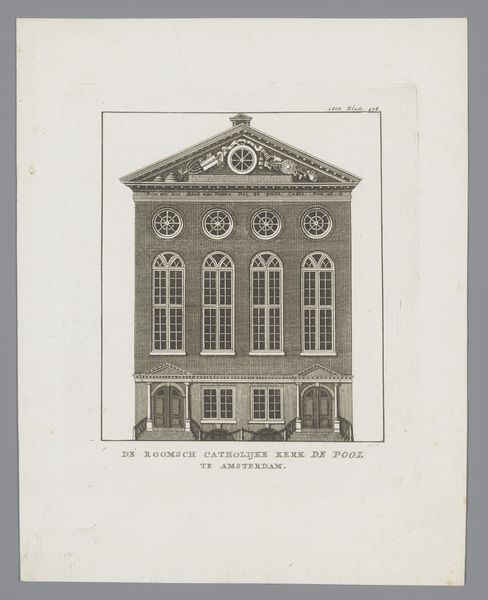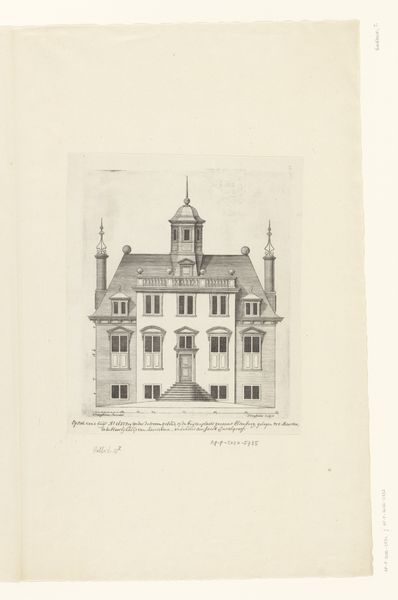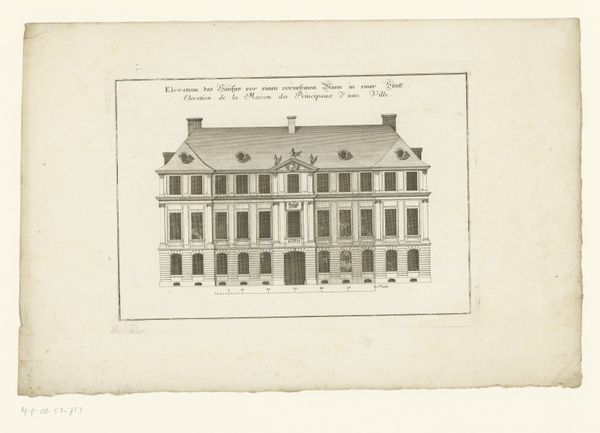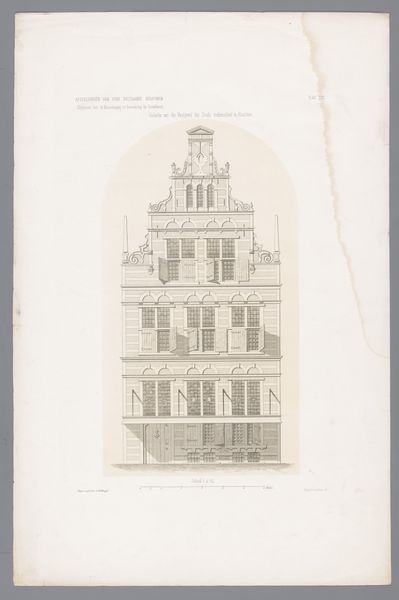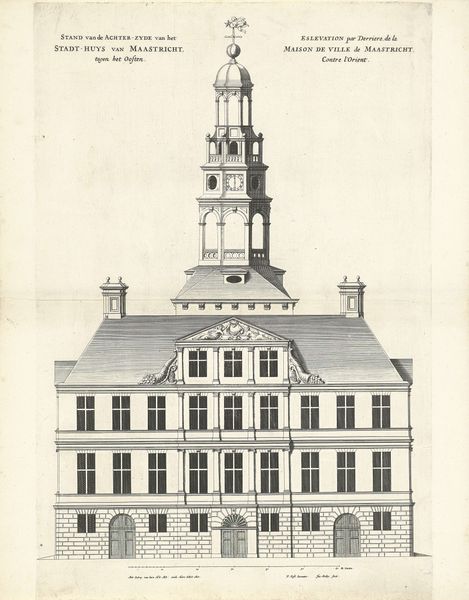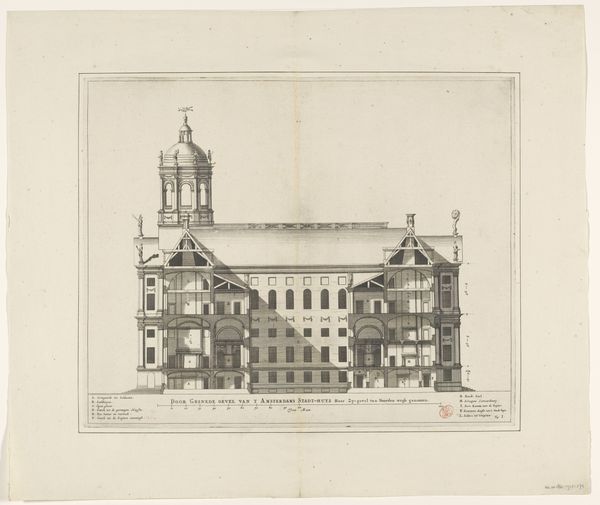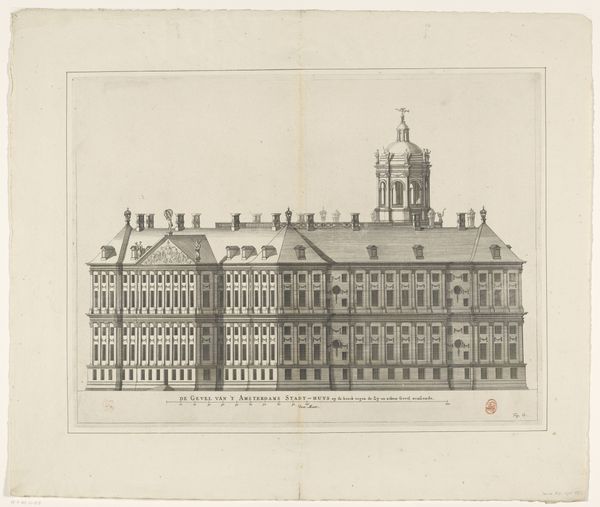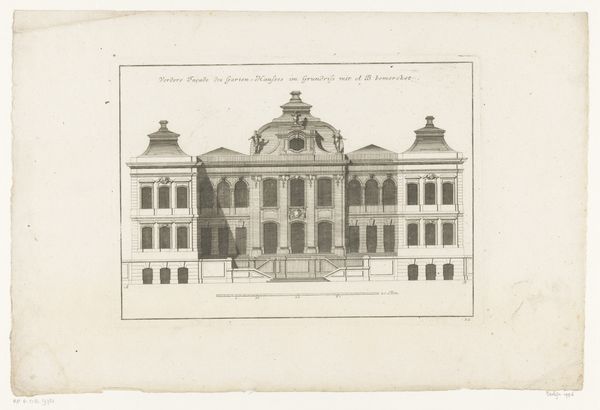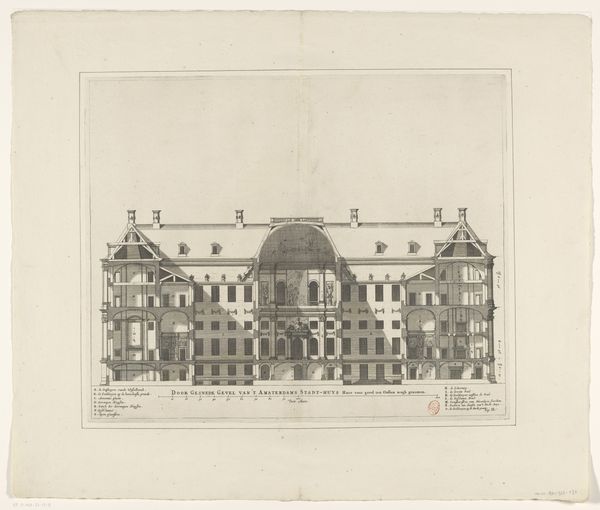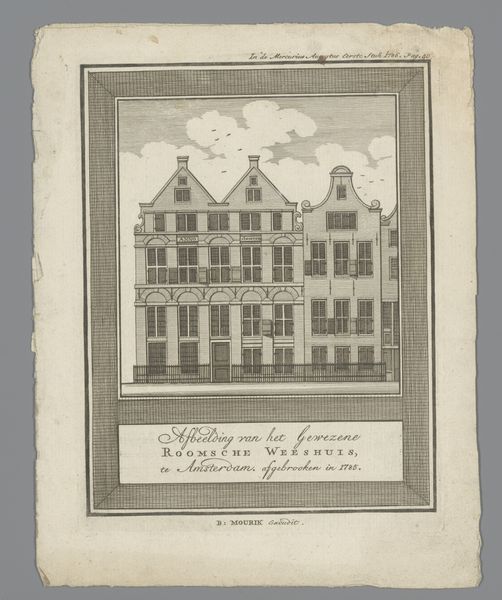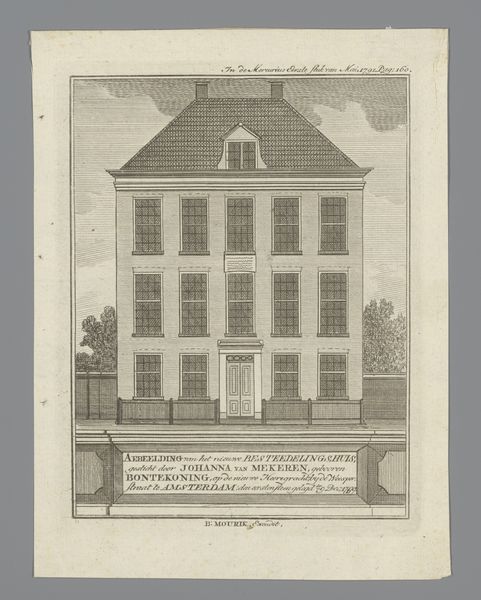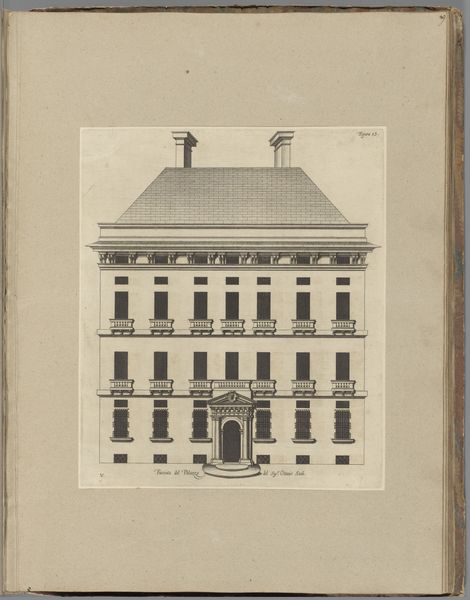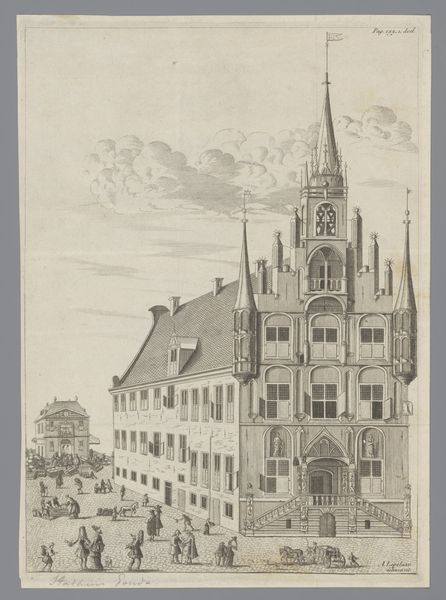
drawing, print, paper, engraving, architecture
#
drawing
#
baroque
# print
#
paper
#
line
#
cityscape
#
engraving
#
architecture
Dimensions: height 197 mm, width 155 mm
Copyright: Rijks Museum: Open Domain
Curator: This is "View of the Town Hall in Maastricht," an engraving on paper made sometime between 1700 and 1750 by Jacobus Harrewijn. Editor: It feels so formal, almost architectural in its precision. It’s like a very detailed blueprint. The lines are so fine, capturing the building’s rigid symmetry, its ascent almost overwhelming. Curator: Baroque sensibilities, for sure! It emphasizes civic pride and power, in my view. The verticality, aiming for the sky, connects with our spiritual aspirations, doesn't it? City halls served as symbols of collective identity and communal governance. The town hall represented stability. Editor: Stability, or perhaps aspiration. This portrayal, from its hierarchical structure to its clear lines, feels aspirational—projecting Maastricht's image as an enlightened and orderly society. Look at the symbolism inherent in those architectural details. They weren’t just building a structure, but rather, they were crafting a tangible manifesto! Curator: You are definitely onto something; the building itself becomes an emblem. Each element, the windows, the spire, could be interpreted as echoing specific values or societal hierarchies, and those were also embedded in collective cultural memories. Those linear elements also remind us that order in society wasn’t merely political but also considered a visual language. Editor: Visual language meant to last. Even the choice of an engraving—a medium that allows for widespread dissemination—underscores this ambition to impress Maastricht’s image on the broader public consciousness. An image intended to project authority and impress onlookers near and far! Curator: Exactly. When we think of visual culture in the 18th century, prints such as this, which circulated widely, served as a powerful form of communication. Consider it a form of social marketing from back then, projecting Maastricht’s ideals. Editor: Thinking about how power uses images – this building now stands for civic virtues and architectural strength as a historical symbol – not just of governance but the ambition embedded within it, even today! Curator: Absolutely! The lasting echo of intended ambition, through skillfully wielded images!
Comments
No comments
Be the first to comment and join the conversation on the ultimate creative platform.
